Overview
TikTok Ads integration with Linkrunner enables you to run powerful app growth campaigns while optimizing on real in-app events and providing seamless deferred deep linking. This integration allows you to track installs, sign-ups, purchases, and custom events across both Android and iOS platforms. 📱 Works for both Android & iOS AppsWhat You’ll Get
- Optimization on real in-app events — Track and optimize on Install, Sign Up, Purchase, and custom events
- Deferred deep linking — Drop users into the right screen after first open, even if they need to install the app first
- Consistent tracking — Unified tracking across Android & iOS via the Linkrunner SDK
- Cross-platform consistency — Track installs across iOS and Android with one unified flow
Setup Process
Setting up TikTok Ads integration involves two main steps: configuring a pixel in TikTok Events Manager and setting up your first campaign.1. Configuring Pixel in TikTok Events Manager
This process takes approximately 5 minutes and connects your app tracking with TikTok’s advertising platform.Step 1: Connect Data Source
- Go to TikTok Events Manager
- Click on Connect data source

Step 2: Select Web as Data Source
- Select Web from the available options
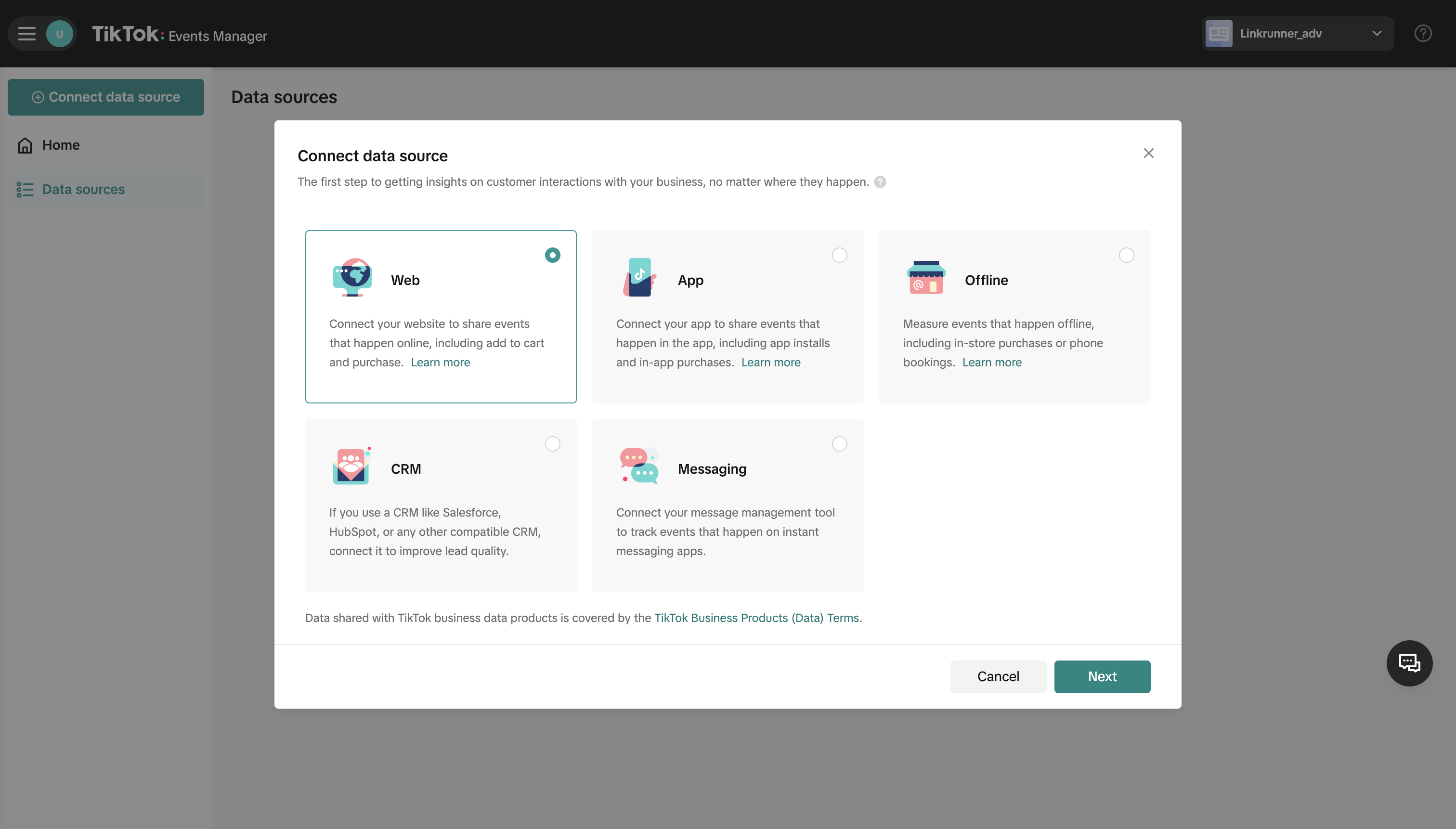
Step 3: Add Your Website
- Enter your website link in the provided field
- Click Continue
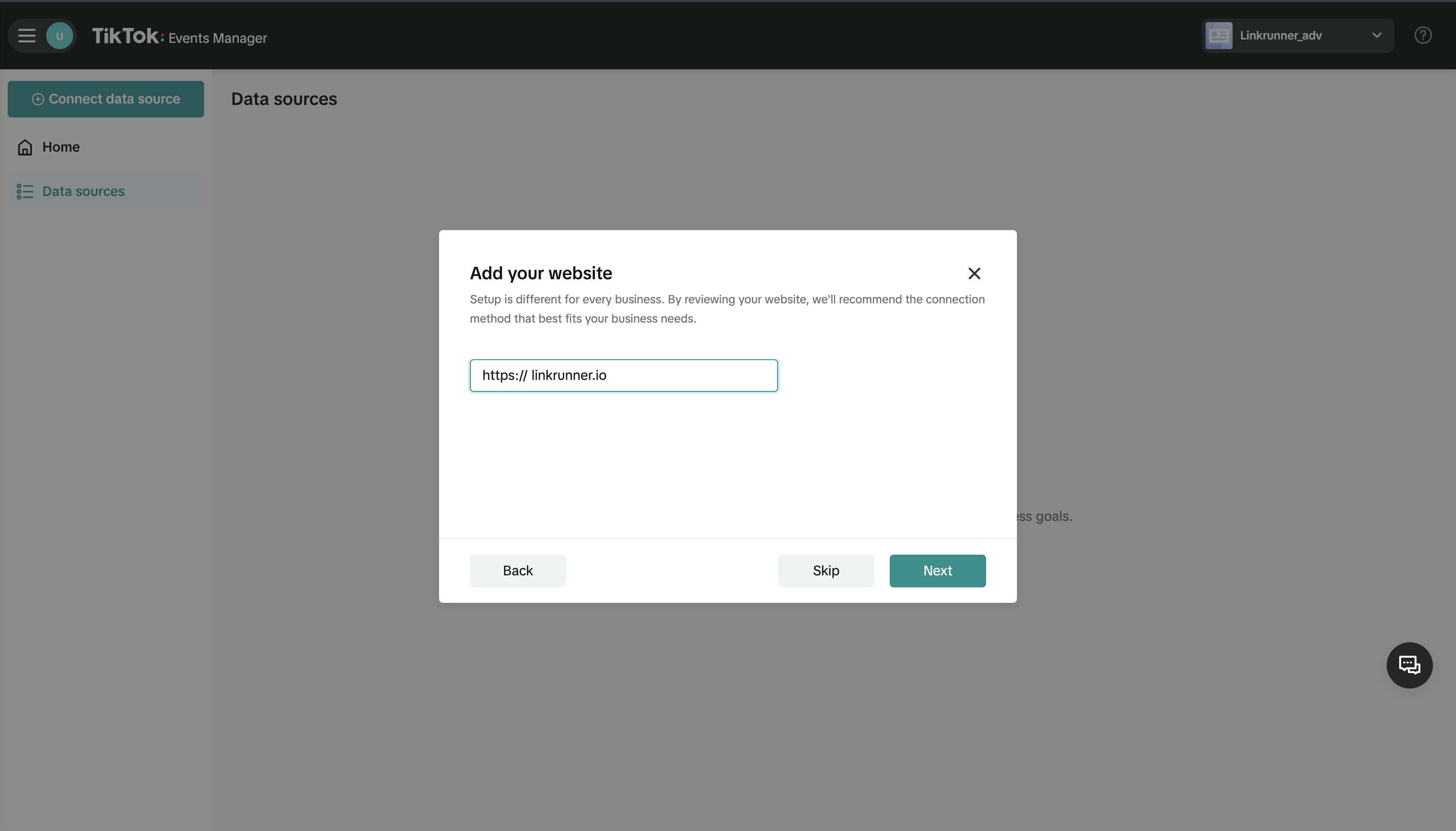
Step 4: Choose Manual Setup
- Click on Manual setup option
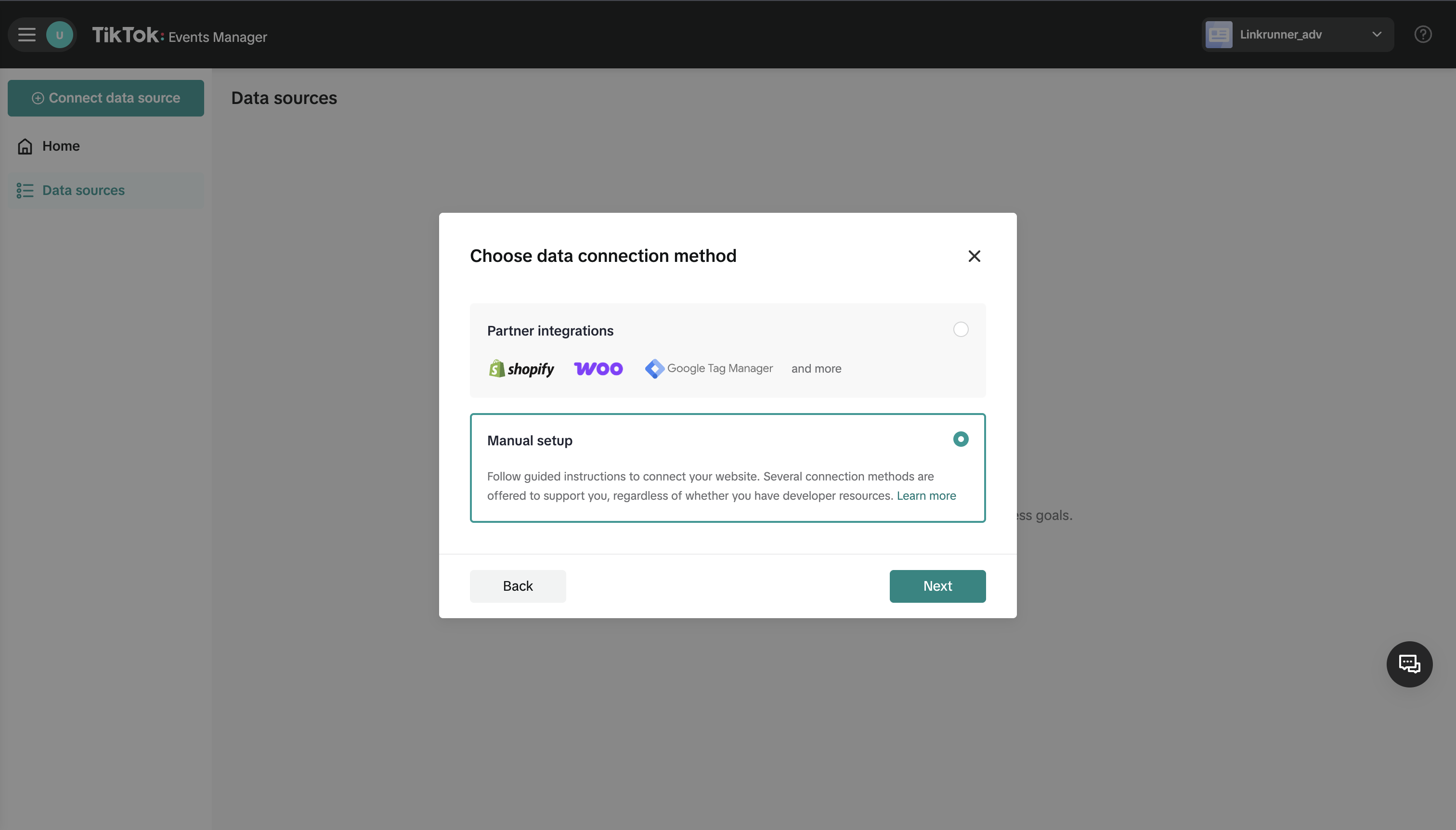
Step 5: Select Events API
- Click on Events API as your setup method
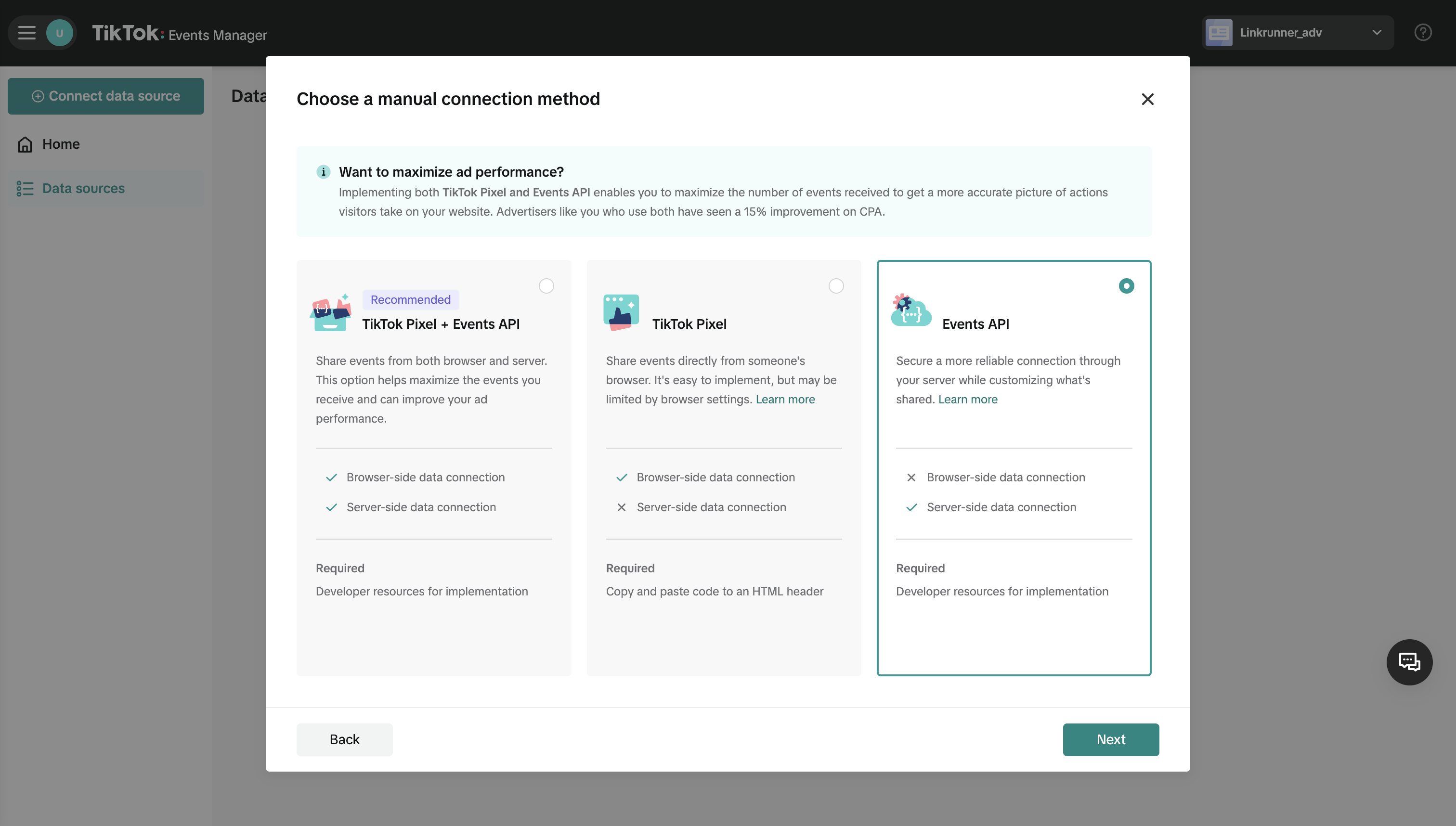
Step 6: Name Your Pixel
- Add a descriptive name for your TikTok Pixel
- Click Continue
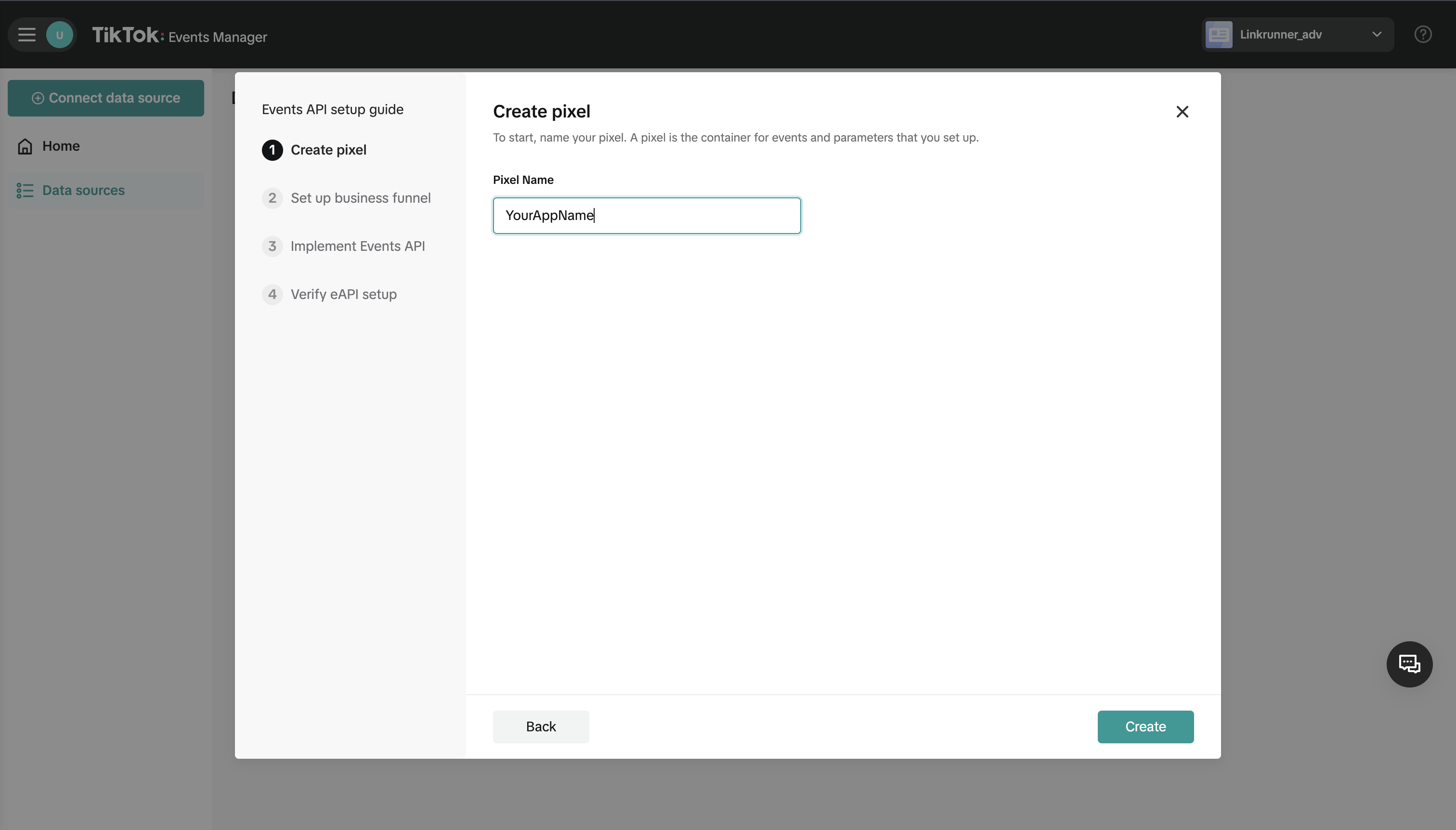
Step 7: Select Template
- Select a template (E-commerce recommended)
- Click Continue
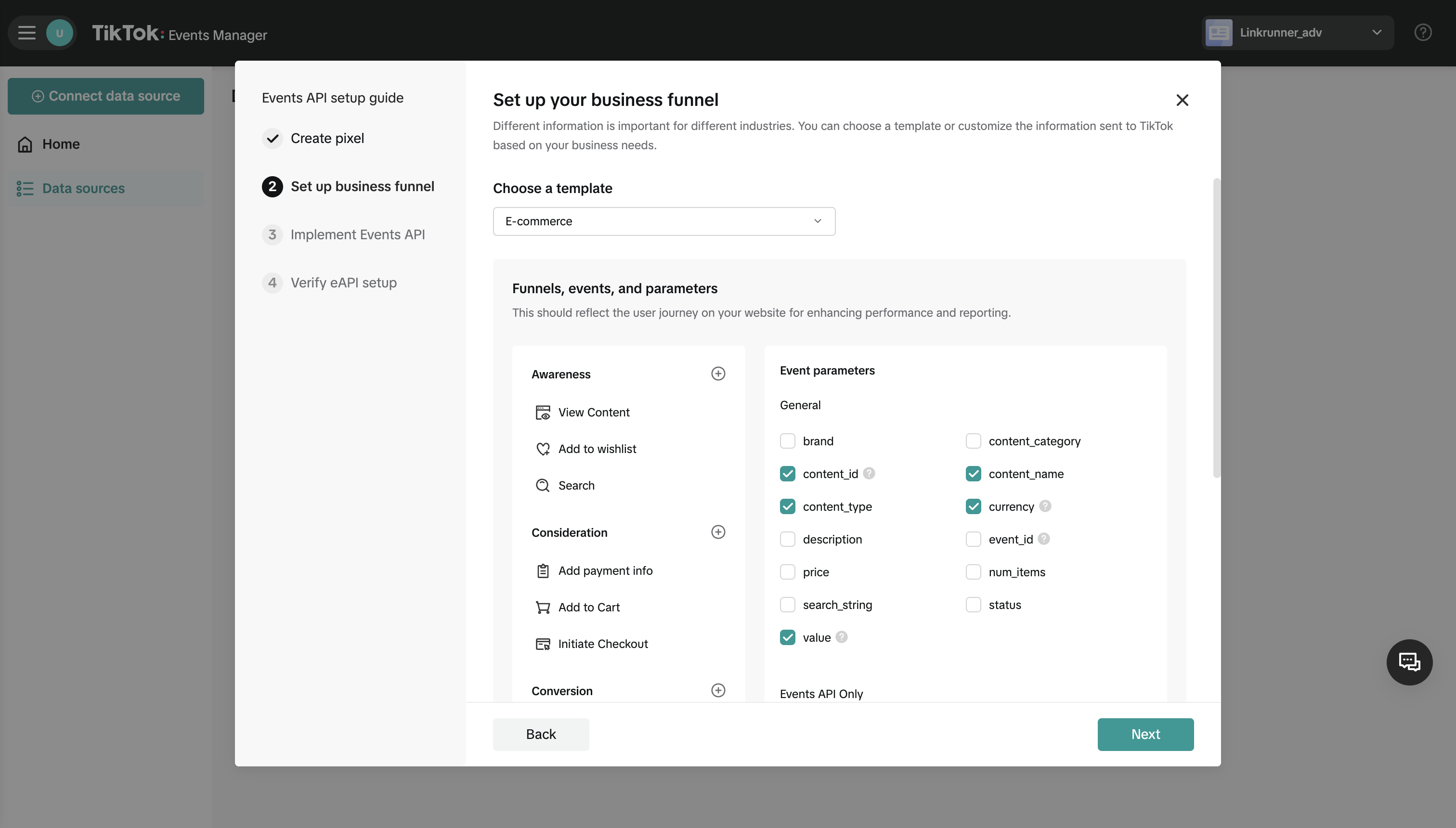
Step 8: Copy Credentials
- Copy the Pixel ID from the setup screen
- Copy the Access Token from the setup screen
- Send both credentials to the Linkrunner team at [email protected]
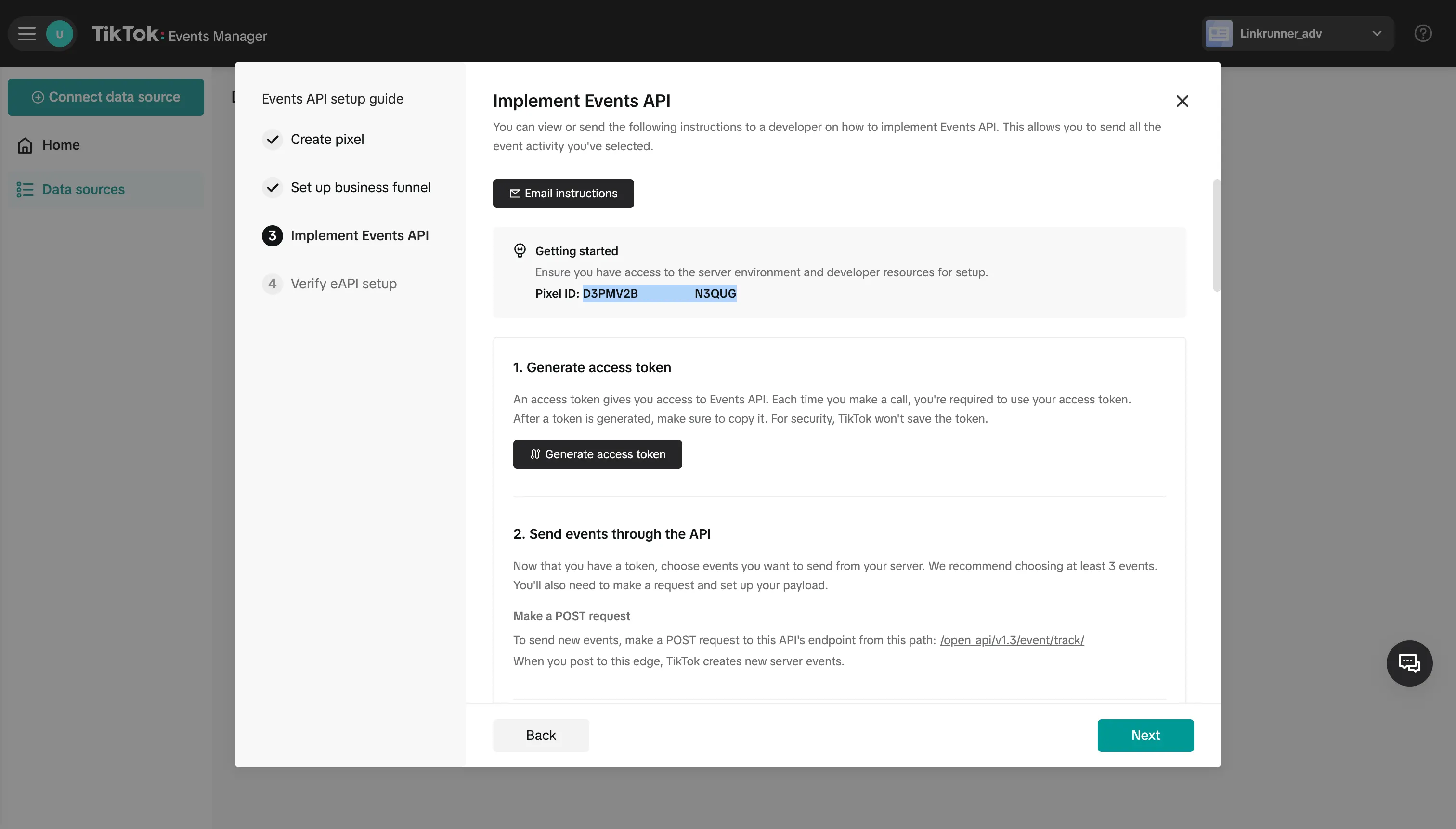
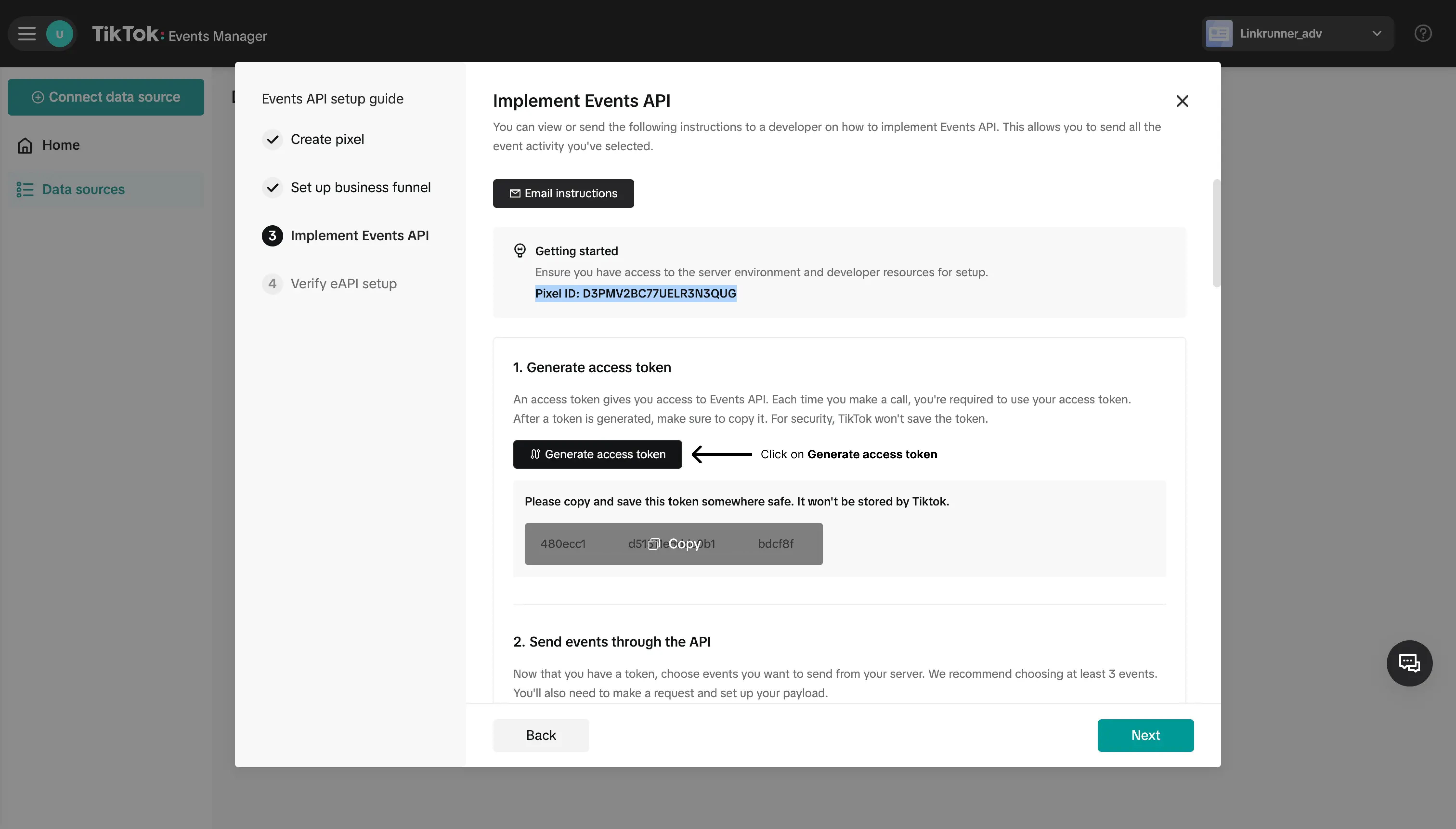
At this point your TikTok Pixel setup is completed! The Linkrunner team will configure the integration on their
end once they receive your credentials.
2. Setting up your first tikTok campaign
After your pixel is configured, you can create your first TikTok ad campaign optimized for app conversions.Step 1: Create Campaign
- Create a new campaign with Sales > Website conversion objective
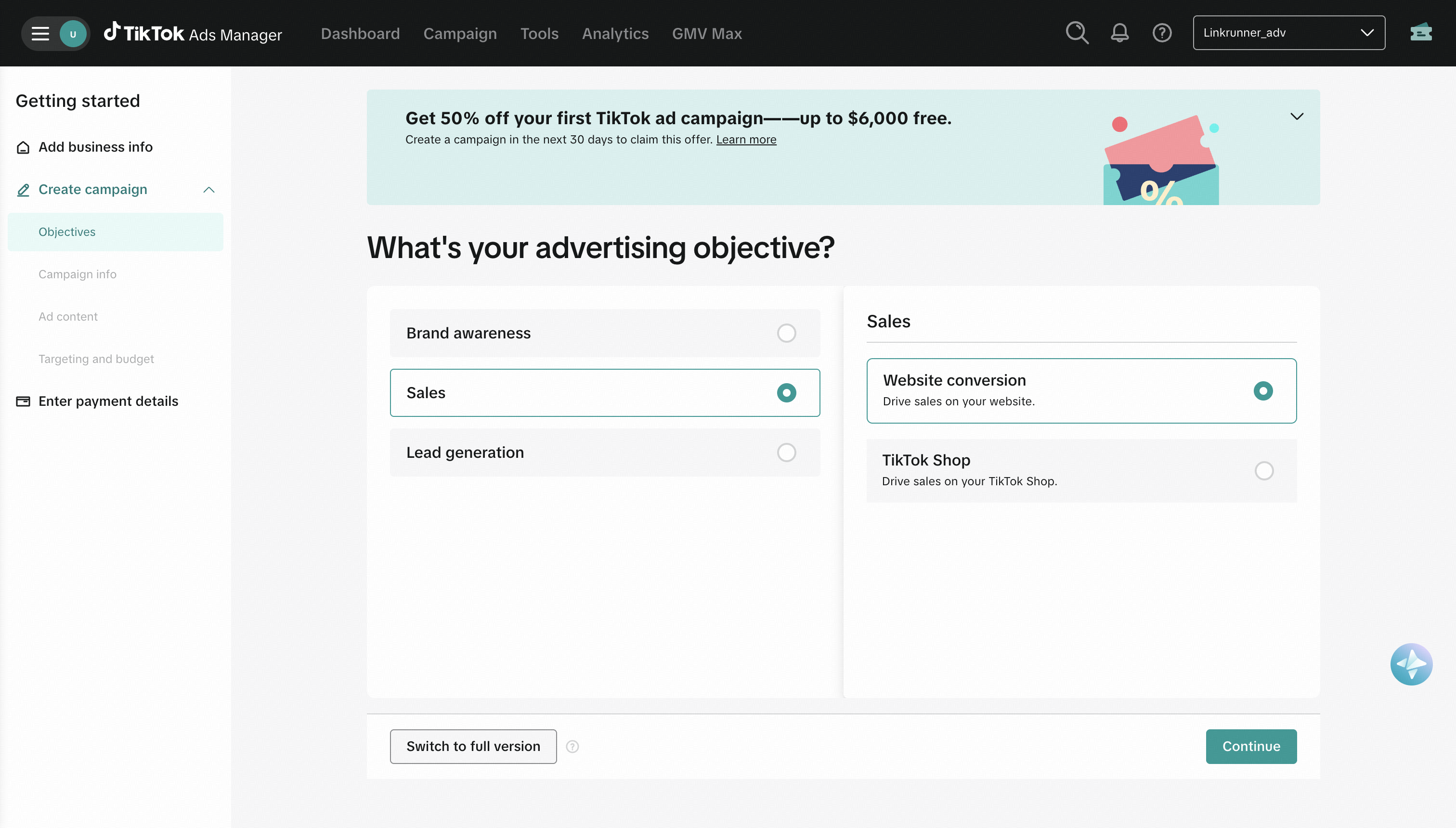
Step 2: Set Optimization Goal
- Under Campaign info > Optimization goal, select Conversion
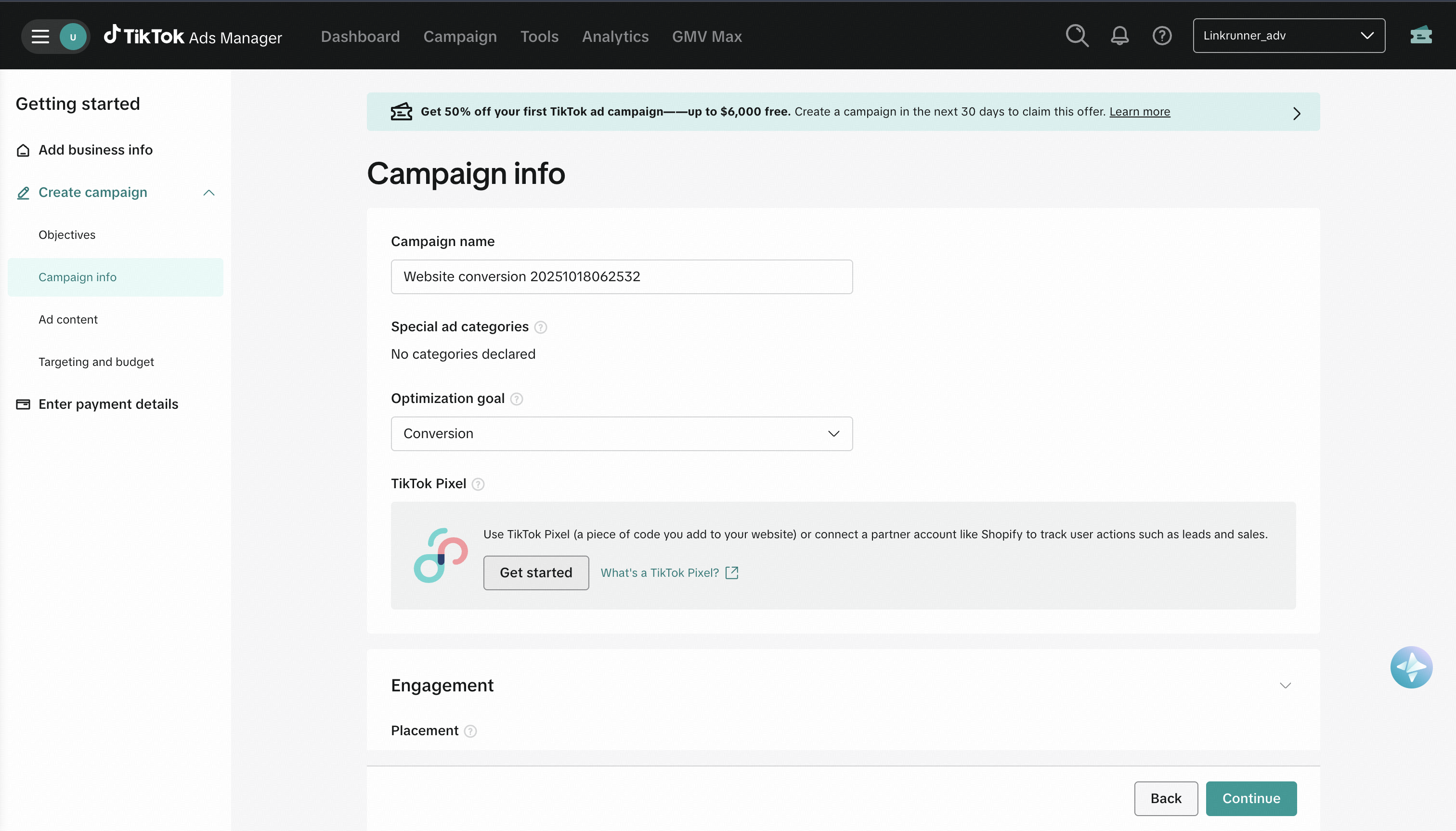
Step 3: Select Your Pixel
- Select the TikTok pixel you created in the previous steps
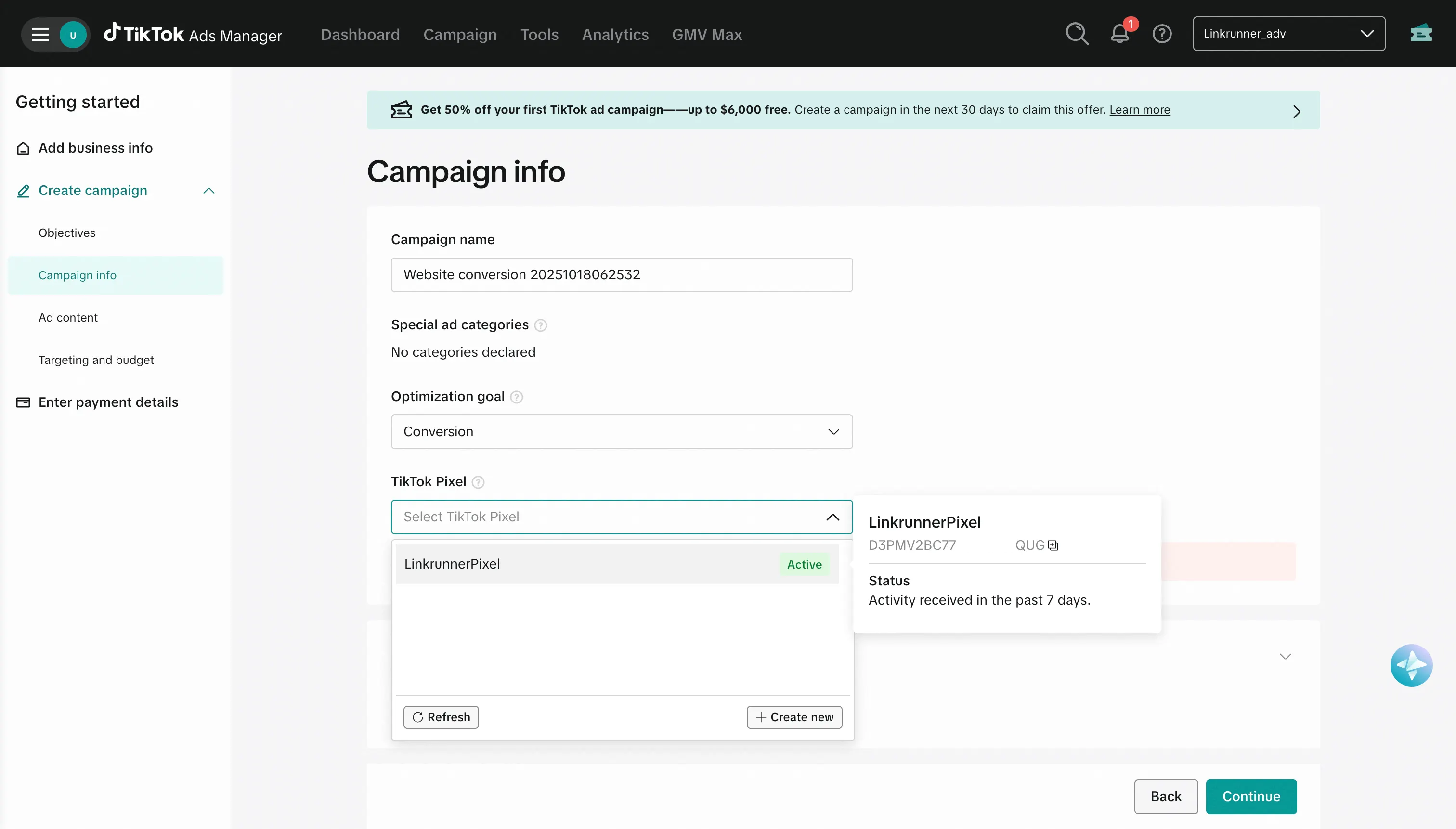
Step 4: Choose Optimization Event
- Select the event based on which you would like to optimize your ad campaign
- Common events include: Install, Sign Up, Purchase, or custom events
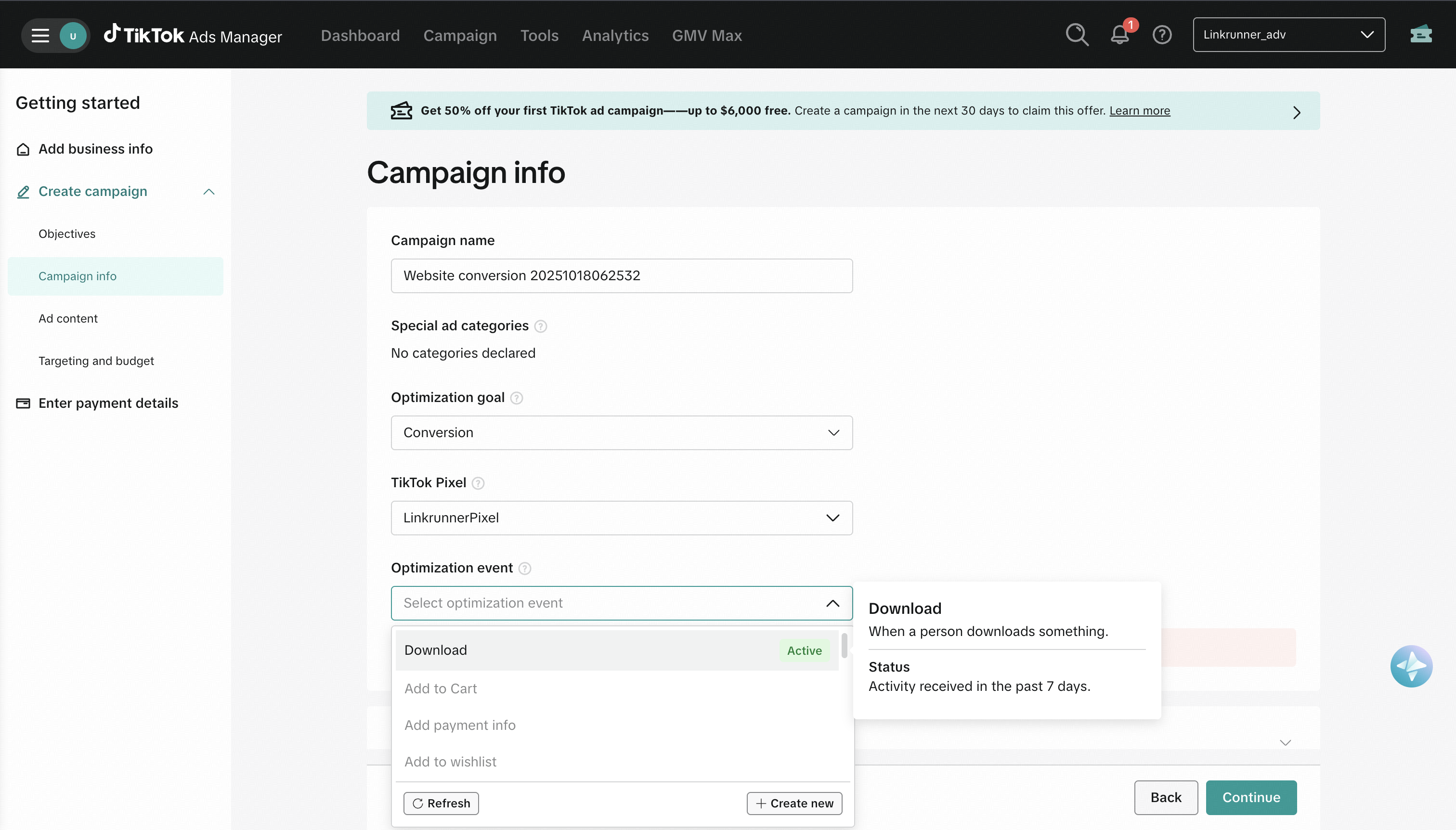
Step 5: Create Campaign in Linkrunner Dashboard
- Go to Linkrunner Dashboard
- Create a new campaign
- Copy the Shareable campaign link
- Use this link as the destination URL when setting up your ad set in TikTok
Step 6: Complete Campaign Setup
After selecting your optimization event, continue setting up your ad campaign with your targeting, creative, and budget preferences. Once completed, Linkrunner will track all downloads, sign-ups, and in-app events like purchases and custom actions!Deferred Deep Linking
One of the powerful features of running TikTok ads with Linkrunner is deferred deep linking support:- If your campaign includes deep link parameters, Linkrunner ensures that after the install and first open, users land on the correct in-app content
- This means a user who clicked an ad for a specific product but hadn’t installed your app yet will still be taken directly to that product screen inside the app after installation
- Works seamlessly across both iOS and Android platforms
Why Run Web-to-App Ads?
Running web-to-app ads with TikTok gives you more flexibility and control over your campaigns, while still unlocking:- In-app event optimization — TikTok can optimize on installs or post-install events like purchases
- Deferred deep linking — Users land on the right content inside your app after they install from the ad
- Cross-platform consistency — Track installs across iOS and Android with one unified flow
- Better attribution — More accurate tracking of user acquisition and in-app behavior